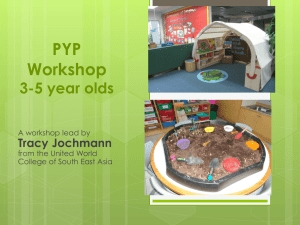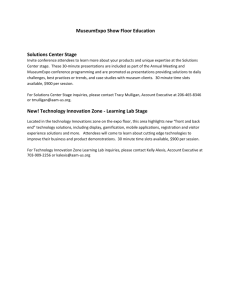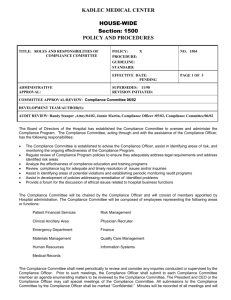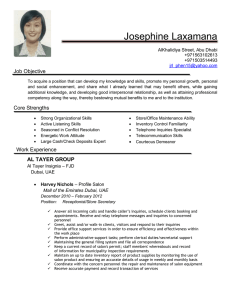535
advertisement
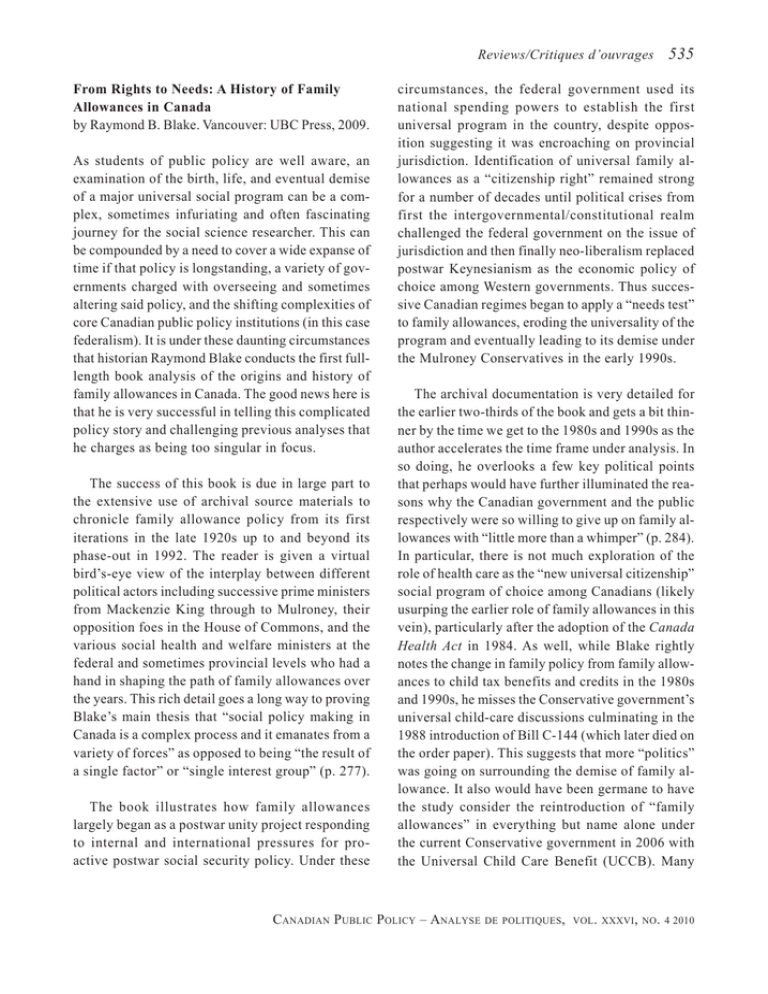
Reviews/Critiques d’ouvrages From Rights to Needs: A History of Family Allowances in Canada by Raymond B. Blake. Vancouver: UBC Press, 2009. As students of public policy are well aware, an examination of the birth, life, and eventual demise of a major universal social program can be a complex, sometimes infuriating and often fascinating journey for the social science researcher. This can be compounded by a need to cover a wide expanse of time if that policy is longstanding, a variety of governments charged with overseeing and sometimes altering said policy, and the shifting complexities of core Canadian public policy institutions (in this case federalism). It is under these daunting circumstances that historian Raymond Blake conducts the first fulllength book analysis of the origins and history of family allowances in Canada. The good news here is that he is very successful in telling this complicated policy story and challenging previous analyses that he charges as being too singular in focus. The success of this book is due in large part to the extensive use of archival source materials to chronicle family allowance policy from its first iterations in the late 1920s up to and beyond its phase-out in 1992. The reader is given a virtual bird’s-eye view of the interplay between different political actors including successive prime ministers from Mackenzie King through to Mulroney, their opposition foes in the House of Commons, and the various social health and welfare ministers at the federal and sometimes provincial levels who had a hand in shaping the path of family allowances over the years. This rich detail goes a long way to proving Blake’s main thesis that “social policy making in Canada is a complex process and it emanates from a variety of forces” as opposed to being “the result of a single factor” or “single interest group” (p. 277). The book illustrates how family allowances largely began as a postwar unity project responding to internal and international pressures for proactive postwar social security policy. Under these 535 circumstances, the federal government used its national spending powers to establish the first universal program in the country, despite opposition suggesting it was encroaching on provincial jurisdiction. Identification of universal family allowances as a “citizenship right” remained strong for a number of decades until political crises from first the intergovernmental/constitutional realm challenged the federal government on the issue of jurisdiction and then finally neo-liberalism replaced postwar Keynesianism as the economic policy of choice among Western governments. Thus successive Canadian regimes began to apply a “needs test” to family allowances, eroding the universality of the program and eventually leading to its demise under the Mulroney Conservatives in the early 1990s. The archival documentation is very detailed for the earlier two-thirds of the book and gets a bit thinner by the time we get to the 1980s and 1990s as the author accelerates the time frame under analysis. In so doing, he overlooks a few key political points that perhaps would have further illuminated the reasons why the Canadian government and the public respectively were so willing to give up on family allowances with “little more than a whimper” (p. 284). In particular, there is not much exploration of the role of health care as the “new universal citizenship” social program of choice among Canadians (likely usurping the earlier role of family allowances in this vein), particularly after the adoption of the Canada Health Act in 1984. As well, while Blake rightly notes the change in family policy from family allowances to child tax benefits and credits in the 1980s and 1990s, he misses the Conservative government’s universal child-care discussions culminating in the 1988 introduction of Bill C-144 (which later died on the order paper). This suggests that more “politics” was going on surrounding the demise of family allowance. It also would have been germane to have the study consider the reintroduction of “family allowances” in everything but name alone under the current Conservative government in 2006 with the Universal Child Care Benefit (UCCB). Many Canadian Public Policy – Analyse de politiques, vol. xxxvi, no. 4 2010 536 Reviews/Critiques d’ouvrages social policy analysts have identified the UCCB as a more generous form of “family allowance” at $100 per month per child under six years, even if the age range of beneficiaries is more restricted and the benefit is taxable. Clearly the idea of family allowances is not necessarily dead in Canada, even today. In the end, I believe that From Rights to Needs makes an important historical contribution to the study of social policy in Canada, universal programs in general and, more specifically, tells us much that we did not know about the complex story of family allowances. As Blake notes, more attention to what occurred in this respect at the provincial level during these years is definitely worth further study and would help illuminate the social policy challenges associated with federalism that continue today. Cheryl Collier, University of Windsor Canadian Public Policy – Analyse de politiques, vol. xxxvi, no. 4 2010 Reviews/Critiques d’ouvrages Statistical Models and Causal Inference: A Dialogue with the Social Sciences by David A. Freedman. Edited by David Collier, Jasjeet S. Sekhon, and Philip B. Stark. New York: Cambridge University Press, 2010, 399 pp. This volume is a collection of various works by the late University of California—Berkeley statistician David A. Freedman compiled shortly before his death and edited by his colleagues. Professor Freedman worked on issues in applied statistics and was particularly concerned with their usage in disciplines like epidemiology, political science, and economics. His work in this text is on using mathematics and statistical theory to undo common misconceptions that have emerged in the social sciences around model design and model diagnostic testing. The topics in the book range from valuable elementary arguments presented with sophisticated theory to prove them, to seemingly dated or esoteric presentations of specific topics that may interest only a minority of researchers. The valuable sections definitely outweigh the easily skipped digressions into less popular topics. Freedman’s recommendations for practice are always needed in our fields, which sometimes gloss over the details behind the assumptions we use in modeling. Part 1, “Statistical Modeling: Foundations and Limitations,” presents Freedman’s skeptical attitude toward the use of “causal” models in the statistics. After the first chapter’s introduction to the difference between Bayesian and frequentist statistics, Freedman lays out his thoughts on various established practices in the social sciences. For example, the practice of imagining a population that does not exist on its own (e.g., The homeless population is the process generating homeless people, of which all the homeless people in a city are a sample) is sharply criticized, as are meta-analyses (“Just say no”). Freedman also decries assuming independence of observations outside the context of society, and his recommendations for practice are to avoid imputation processes and understand the assumptions 537 required by models. He closes with the importance of topic-specific understanding when seeking out causal relationships and the futility in using certain forms of data to answer causal questions. Part 2, “Studies in Political Science, Public Policy, and Epidemiology,” despite its promising title, is decidedly weak because of its inclusion of strange topics. For example, the discussion of methods used in the United States Census in 2000 seems out of place, but the lessons from that chapter have some applicability to large datasets in general. The discussion on the United States Geological Service and the prediction of earthquakes is more valuable as a consideration of probability than a social science dialogue. Two chapters deal with conventional wisdom concerning the Intersalt study on hypertension and survival analysis, respectively, and are must-reads for epidemiologists. Part 3, “New Developments: Progress or Regress?,” gets to the root of Freedman’s argument against the spread of uninformed modeling in social sciences. The two motifs of Freedman’s work— model diagnostics not being a replacement for topic knowledge, and intellectual wrangling of models not being a replacement for better data gathering—are ubiquitous in this section. These motifs are presented in discussions on endogeneity in Probit models, particularly focusing on the inadequacy of Heckman two-step procedures. For epidemiologists, there is an informative discussion on logistic regression, which in the process of a randomized experimental design is shown to be inconsistent and is compared to a more general test. Part 4, “Shoe Leather Revisited,” concludes by reiterating Freedman’s cautions over letting models supersede the reasoning process he claims has been used to make great discoveries throughout modern history (such as Snow’s cholera study). The section also stresses the importance of what Freedman calls “qualitative knowledge.” Such knowledge includes informal reasoning, insights Canadian Public Policy – Analyse de politiques, vol. xxxvi, no. 4 2010 538 Reviews/Critiques d’ouvrages into possible mechanisms or processes creating the data, and substantive understanding that comes from expending effort to understand the question under investigation. Freedman’s arguments are well taken and, in the opinion of the reviewer, classic and well-worn critiques that most practitioners are aware of on some level. The added-value of this text is the explicit statement, through math and argument, of how wrong things can go when the assumptions behind models are not met by the data or the process generating the data. Practitioners will sometimes claim that they do not believe their models are suspect to a certain bias or that a proposed change to their design will change little since they tested their assumptions. Freedman answers those claims by saying they could never know from their data the answer to those possible weaknesses of their study and should better understand the tools they are using. Policy research by economists and epidemiologists has found some traction in more advanced models. Procedures like instrument variables analysis or similar two-stage regression techniques attempt to tease causality out of datasets where it would not be possible to make causal judgments in the past. These intensive procedures are meant to eliminate bias from endogenous variables, and rely on assumptions and statistical manoeuvring to answer the research question. Policy research also seems to accept the results of studies using advanced models as superior to those using simpler models or more haphazard approaches to the analysis, as we see in epidemiology where the Cox proportional hazards model permeates almost all studies that use longitudinal data. Freedman’s work attacks these presumptions of correctness or superiority by illuminating the weakness of these procedures when the assumptions fail. Practitioners who are unaware of these assumptions could benefit from reading a selection of chapters in this book. The implication for policy research from this text is to report summary statistics and basic tabulations, as well as more simple analyses, before skipping to the complicated models. There is really no correction to the fundamental flaws that Freedman points out, and so more reporting of basic analytical processes along with complicated models is recommended to fully disclose the research process and allow readers to judge for themselves whether the complicated models are justified. While this should be straightforward to practitioners, it is not obvious that it is followed from publications. D aniel J. D utton , Community Health Sciences, University of Calgary Canadian Public Policy – Analyse de politiques, vol. xxxvi, no. 4 2010 Reviews/Critiques d’ouvrages The Conduct of Public Inquiries: Law, Policy, and Practice by Ed Ratushny. Toronto: Irwin Law, 2009. In 1867, Walter Bagehot observed that “the great maxim of modern thought is not only the toleration of everything but the examination of everything.” This perhaps explains the propensity in Canada to hold public inquiries. Given their numbers, brave is the academic who takes on their study. There have been so many of such varying nature that focusing on a single inquiry is daunting enough, let alone undertaking a comparative analysis of dozens. Ed Ratushny has been brave—and successful—in producing an important, useful, and broad-ranging analysis of these “residual institutions,” as he calls them. He drills down very deeply into the workings of public inquiries and displays a unique depth and breadth of knowledge. Indeed, it is doubtful if anyone in this country knows so much about so many public inquiries, and we learn a great deal from this ambitious overview. Ratushny does an exemplary job in the opening two chapters of introducing the topic and setting the stage for further analysis. He includes a handy set of tables indicating authorizing statutes for inquiries in different Canadian jurisdictions and summarizing the 40 inquiries that receive his attention. Ratushny notes the usual taxonomies of inquiries as either policy/advisory or investigative, but goes further by parsing the investigative types. He also importantly points out in many examples how policy/advisory and investigative inquiries often overlap. Ratushny presents a most useful analysis of various bodies which, while not usually considered in the literature, are nonetheless important instruments alongside the traditionally understood meaning of “public inquiries.” Thus he comments comparatively on wrongful-conviction inquiries, inquiries investigating crimes, and other ongoing inquiry bodies as well as alternative processes like legislative committees, criminal investigations, existing statutory 539 processes, departmental investigations, and informal inquiries. This is a real strength of the book. In addition, Ratushny usefully canvasses significant elements of public inquiries in well-laid-out chapters on how they are established, the role of commissioners and counsel, their legal framework, the conduct of hearings, and the final report. These chapters contain considerable detail and insight of great value, and are interspersed with practical commentary on the “how-to” aspects of running a successful inquiry. One organizational issue that might have deepened the comparative value of the analysis would have been to integrate Chapter 10 on policy/advisory inquiries into the other chapters on investigative inquires, rather than have it stand alone. As is, it feels a bit like an add-on that peters out with a brief discussion of truth and reconciliation commissions. A more substantive concluding chapter might have tied together key themes and findings. The literature on public inquiries needs to address a fundamental question: What is their role in policy change? As Ratushny correctly asserts, policy considerations arise out of both policy/advisory and investigative inquiries. What are the conditions under which a public inquiry brings about policy change? Are there certain key variables that explain the influence of these bodies which, after all, have no power to implement their recommendations? Is it leadership? Is it political conditions? Is it the care with which the terms of reference set out the scope of the inquiry? Is it astute commission counsel? Is it the weight of public evidence or the quality of research by the inquiry? Further, one could ask, What key ideational factors explain the role of public inquires in policy change? What institutional factors explain their role—does there have to be a failure in the executive, legislative, and/or judicial branches to create the space for public inquiries? What about the role Canadian Public Policy – Analyse de politiques, vol. xxxvi, no. 4 2010 540 Reviews/Critiques d’ouvrages of key actors, both in the state and society? And finally, what is the nature of relations that affect the ability of the inquiry to effect policy change, both inside and outside the inquiry? These questions occur explicitly or implicitly in Ratushny’s dense analysis, although not necessarily systematically. Thus, for example, he provides a detailed assessment of the personality and leadership of a certain commission chair in one account of an inquiry’s success, but not in others. Is personality and leadership key, or simply serendipitous? At the same time it must be conceded that, as his study implicitly reveals, the wide range of types of public inquiries makes systematic assessment of their success as policy instruments very difficult. For every “finding” there is a counterfactual. Public inquiries by nature lay somewhere between the study of law and politics, and can be assessed through a number of other disciplinary lenses. As a consequence, relying on one discipline cannot easily convey their full significance without rubbing the disciplinary sensibilities of others the wrong way. Ratushny develops an excellent analysis based mainly on case law and a legalistic interpretation (particularly around the doctrine of fairness), but inquiries are not just quasi-legal but also broadly sociopolitical as well. This speaks to a broader limitation of the literature on public inquiries. It is dichotomous. Either you get the lawyers and judges weighing in, or you get the political scientists. Rare is the study that transcends these boundaries. Political issues might be raised around legitimation and representativeness. Do gender, class, and ethnicity matter here? Most commissioners historically have been white male judges. Is this significant to the way they are perceived by the public, to the form inquiries take, or to their outcomes? Research is often a tremendously important part of inquiries, as Ratushny states. But the literature on social science knowledge utilization indicates that discourse construction is a biased process rooted in contested power relations in society and the state. Who is not hired to conduct research can be as telling as who is. Overall, the study of public inquiries could be greatly enhanced by a meeting of disciplinary minds. In the meantime, Ratushny’s “conceptualization of inquiry procedure” succeeds in “encompassing rather than being pre-empted by the broad diversity of public inquiries” (p. 6). This impressive contribution should be standard reading for policy-makers, those involved in inquiries, students of inquiries, and generally anyone interested in these “residual institutions.” G regory J. I nwood , Department of Politics and Public Administration, Ryerson University Canadian Public Policy – Analyse de politiques, vol. xxxvi, no. 4 2010 Reviews/Critiques d’ouvrages The Politics of Suffering: Indigenous Australia and the End of the Liberal Consensus. by Peter Sutton. Melbourne: Melbourne University Press, 2009. ISBN 9 789522 856361 (pbk.). $30.95 (CDN). Among the various failings to which academics are prone is one I call “know-it-all syndrome.” As academics, we spend years investigating specific issues or subjects, mastering research techniques, and reading comprehensively in the secondary literature. In our own fields of expertise we draw careful and contextualized conclusions … and then something happens. Having carefully and deliberately mastered one research field (or, even subfield), a certain percentage of us feel qualified to authoritatively comment on other matters entirely. Respected anthropologist Peter Sutton’s The Politics of Suffering is a case in point. Sutton is a senior and respected Australian anthropologist who is perhaps the leading academic authority on Wik culture. He has conducted landclaims research and made important contributions to linguistics and the study (and popularization) of Australian aboriginal art. His work has won him due respect. The problem with The Politics of Suffering is that its subject—Australian indigenous affairs policy—is not his field of expertise. The result is a disappointing and at times frustrating text. In this book Sutton argues that late 1960s/1970s liberal reforms in Australian aboriginal policy were nothing short of disaster. These reforms aimed to sweep away colonial repression, recognize aboriginal land rights, provide for community autonomy, and recognize the legitimacy of a renewed traditional culture. Instead, aboriginal communities are beset by substance abuse, domestic violence, ill health, and child abuse. What is more, the power of a post-1960s “liberal consensus” produced a self-censorship that ignored problems believing, as liberals are supposedly wont to do, in the infallibility of their own perspective. According to Sutton, this perspective is deeply flawed. Liberals’ key 541 problem is that they believe Australian aboriginal peoples’ problems are related to colonialism. He argues that their problems are not and instead faults alcohol and what he claims is an inherently violent and ego-focused traditional culture. Thus, where “liberals” believe that traditional culture freed of colonialism can create the basis of autonomy and reconciliation, Sutton believes it is a key cause of community breakdown. As for reconciliation, this can really be done only on an individual level and should likely be abandoned as state policy. The Politics of Suffering has been hailed by some as a path-breaking, honest text that marks a new way forward. It shouldn’t be. First, there is little particularly new in this book. The title and argument recycle a lecture and essay Sutton gave and published a decade ago. One assumes Sutton wrote this book to reach a wider audience because, in a scholarly sense, it adds little to what the author has already “put on the table.” Second, the text is amazingly unselfcritical, which is odd for a book that faults others—particularly “liberals”—for their own lack of self-criticism. Indeed, at different points in the text Sutton is at pains to disparage those with whom he disagrees. Liberals, he suggests numerous times, are motivated not by honesty but by political correctness, naiveté, romanticism, and self-interest. Sutton never seems to consider seriously the idea that there can be legitimate disagreements between scholars. Not only does this lacuna lend the text a mean-spirited feel, but is an oddly naïve heuristic for a senior scholar: one either agrees with the author (and hence one is right) or one is in error as a result of character flaws. This is a spurious logic made worse by the fact that it is sustained by a selective reading of the evidence. One example: Sutton frequently references the deeply disturbing report Little Children Are Scared as supporting evidence. This report was one of a series of investigations that drew national attention to the sexual abuse of aboriginal children and contributed to development and implementation of the controversial Northern Territory Emergency Response. It goes without saying that the sexual abuse of children Canadian Public Policy – Analyse de politiques, vol. xxxvi, no. 4 2010 542 Reviews/Critiques d’ouvrages is horrific and must be stopped. But in an effort to support his perspective, Sutton ignores key parts of the report, such as the role of non-aboriginal Australians in child sexual abuse, the identification of state institutional failures regarding child protection, and the report’s support for culturally based support and preventative programs. All of these factors—if they had been included in his analysis—would have forced a modification of Sutton’s position. The same simplicity is evident in other parts of this book. For instance, Sutton writes as if he has not read any scholarly literature on public administration or state formation. Even long-established theories on state-centricism are not in evidence, which leads the author to draw a direct connection between ideas and public policy as if the state were a simple medium through which liberal trends passed. Surely, if one is grappling with policy failure, some understanding of the policy formulation and implementation process is needed. Finally, The Politics of Suffering would have benefited from a reading of contemporary Canadian political theory. An analysis informed by a reading of, say, Kymlicka’s work would have helped Sutton to differentiate between immigrants and “historic [aboriginal] nations” and to avoid the means/ends rationality that informs his policy recommendations. Australia is moving into a new relationship with aboriginal peoples. Part of this transition is a condemnation of previous initiatives. Recently, Will Saunders cautioned against this approach, which he implicitly likened to a form of historical blindness. I agree. The Politics of Suffering is part of this transition. The issues confronting Australians are difficult and painful. Good scholarship can help this transition. Weak scholarship, however impassioned and well intentioned, will only confuse matters. The Politics of Suffering is weak scholarship. Andrew Nurse, Mount Allison University Canadian Public Policy – Analyse de politiques, vol. xxxvi, no. 4 2010

